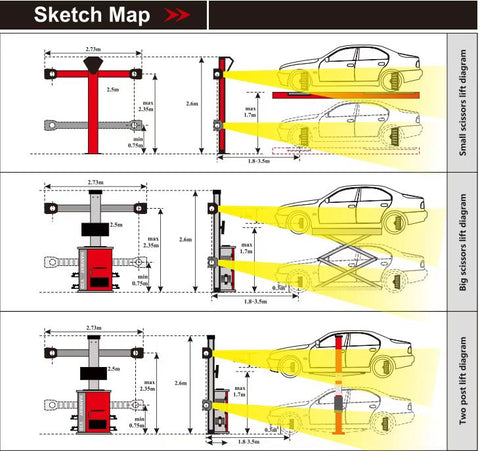DEFINITION
Four-wheel aligner is used to test alignment parameters of vehicle wheels, components of suspension system and components of steering system. By comparing the measured parameters with designed parameters of vehicle manufacturer, it guides technicians to make relevant adjustment to wheel alignment parameters to achieve ideal driving performance, to guarantee the stability and safety of driving and ease of steering and to reduce the side tyre wear and gas consumption.
PURPOSE OF WHEEL ALIGNMENT
The purpose of wheel alignment is to adjust the suspension system and steering system to its correct position. After wheel alignment, the vehicle should achieve the following performances: Ease of steering and stable driving. While driving straight-ahead, the wheel does not run deviated. The steering wheel is on-center naturally. The steering wheel returns to its original position automatically after turning. Reduction of driving resistance and abnormal wear of tyre and chassis components. Enhancement of driving sense of comfort and reduction of oil consumption.
DEFINITION OF RELEVANT 4 WHEEL ALIGNMENT ANGLES
4-wheel alignment angles are present in the relative angles between suspension systems and every active component. Correct wheel alignment angles are the guarantee of driving stability and tyre wear reduction.
The angles mainly consist of camber, toe-in, caster, steering axle inclination and set-back, etc.



